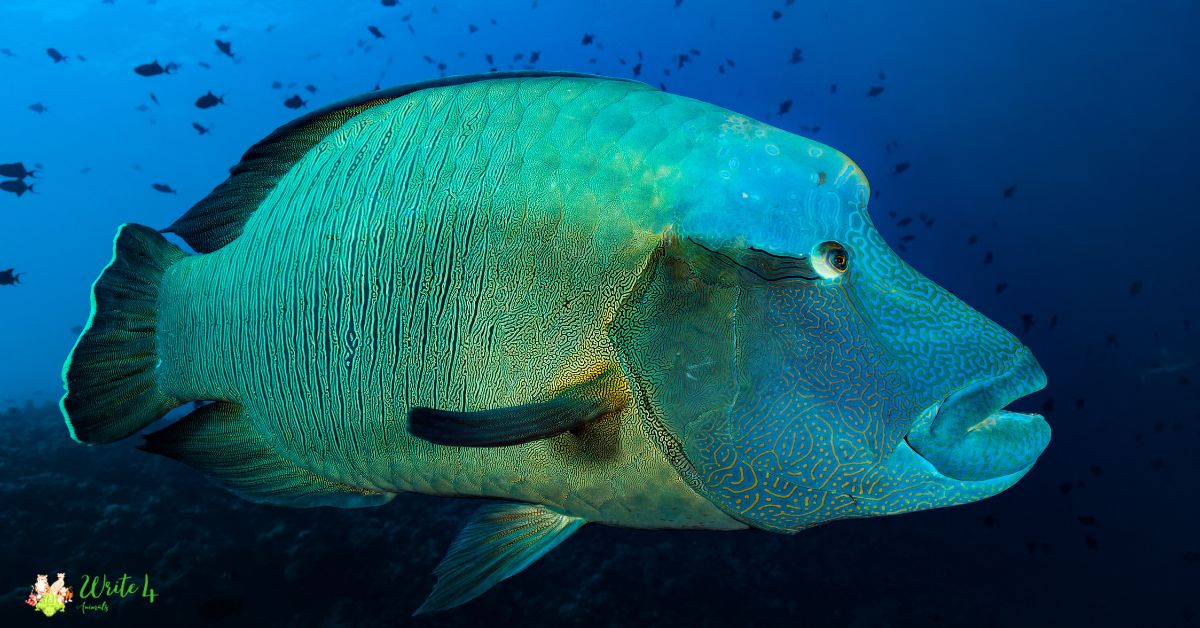When it comes to the incredible diversity of aquatic life, the world of fish never ceases to amaze us. From vibrant colors and intricate patterns to unique body shapes, the underwater realm is home to some of nature’s most extraordinary creatures. One distinctive characteristic that stands out among certain fish species is their prominent foreheads.
In this blog post, we’ll dive deep into the world of aquatic wonders and explore ten fascinating fish with big foreheads that captivate both scientists and enthusiasts alike.
10 fish with big forehead
1. Hammerhead Shark (Sphyrnidae)
The Hammerhead shark is undoubtedly one of the most recognizable and intriguing fish in the ocean. Its most distinctive feature is the wide, hammer-shaped head, known as the cephalofoil, which extends from both sides of its mouth. This unique head shape serves several purposes, including enhanced binocular vision and improved electroreception, allowing them to detect the electric fields produced by their prey.

Hammerheads are apex predators, found in various oceanic habitats worldwide, from shallow coastal waters to deep ocean depths. With a diverse diet that includes fish, squid, and other marine creatures, these sharks play a crucial role in maintaining the balance of marine ecosystems.
2. Napoleon Wrasse (Cheilinus undulatus)
The Napoleon Wrasse, also known as the humphead wrasse, is a majestic and revered inhabitant of coral reefs in the Indo-Pacific region. Its distinctively humped forehead and vibrant colors make it one of the most sought-after species by divers and underwater photographers. Growing up to six feet in length and weighing over 400 pounds, the Napoleon Wrasse is the largest living species of wrasse.
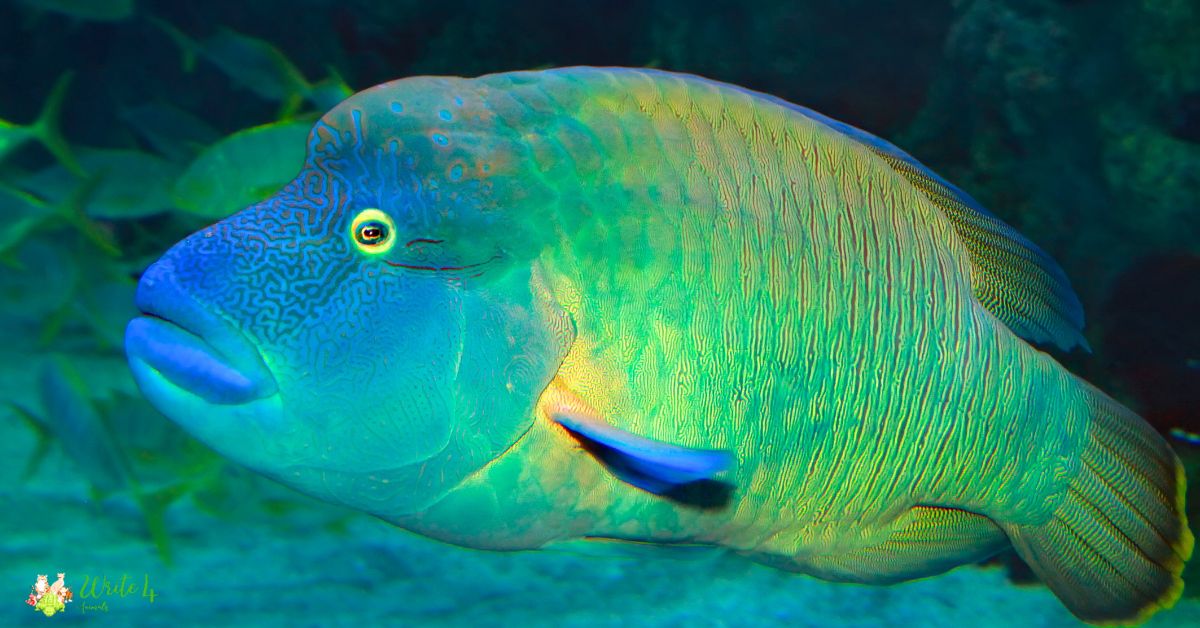
This iconic fish plays a vital ecological role in coral reef ecosystems by controlling the population of certain invertebrates. Unfortunately, due to overfishing and habitat destruction, the Napoleon Wrasse is now listed as endangered, highlighting the need for conservation efforts to protect this magnificent species.
3. Unicornfish (Naso spp)
Unicornfish are a group of tropical fish belonging to the Naso genus. They are easily recognizable by the elongated “rostrum” or horn-like extension on their foreheads. This distinctive feature has earned them their common name – unicornfish.
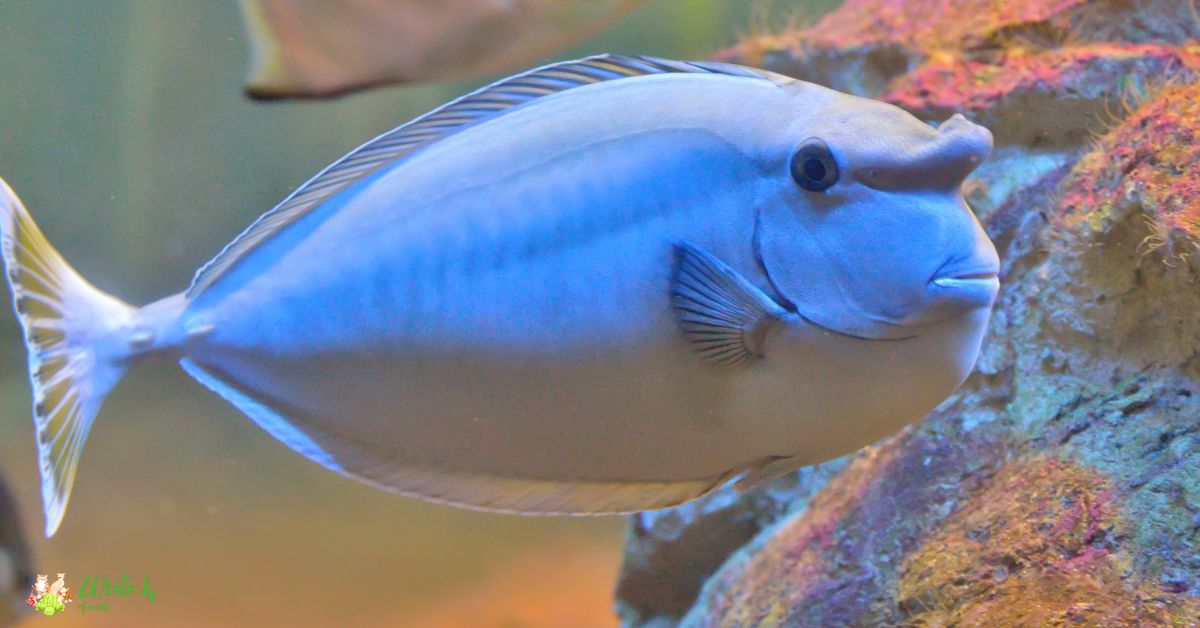
The rostrum, which can be quite long in some species, serves multiple purposes, including territorial displays and species recognition. Unicornfish are herbivorous, primarily feeding on algae and seagrass, making them essential in maintaining the health of coral reef environments.
Their vibrant colors and unique body shapes make them popular attractions for divers and snorkelers exploring the warm waters of the Indo-Pacific region.
4. Pufferfish (Tetraodontidae family)
Pufferfish, also known as blowfish, are among the most fascinating and curious creatures in the sea. They are part of the Tetraodontidae family, and what sets them apart is their ability to inflate their bodies into a ball-like shape when threatened, deterring potential predators. Pufferfish have a large, rounded forehead that adds to their charm.
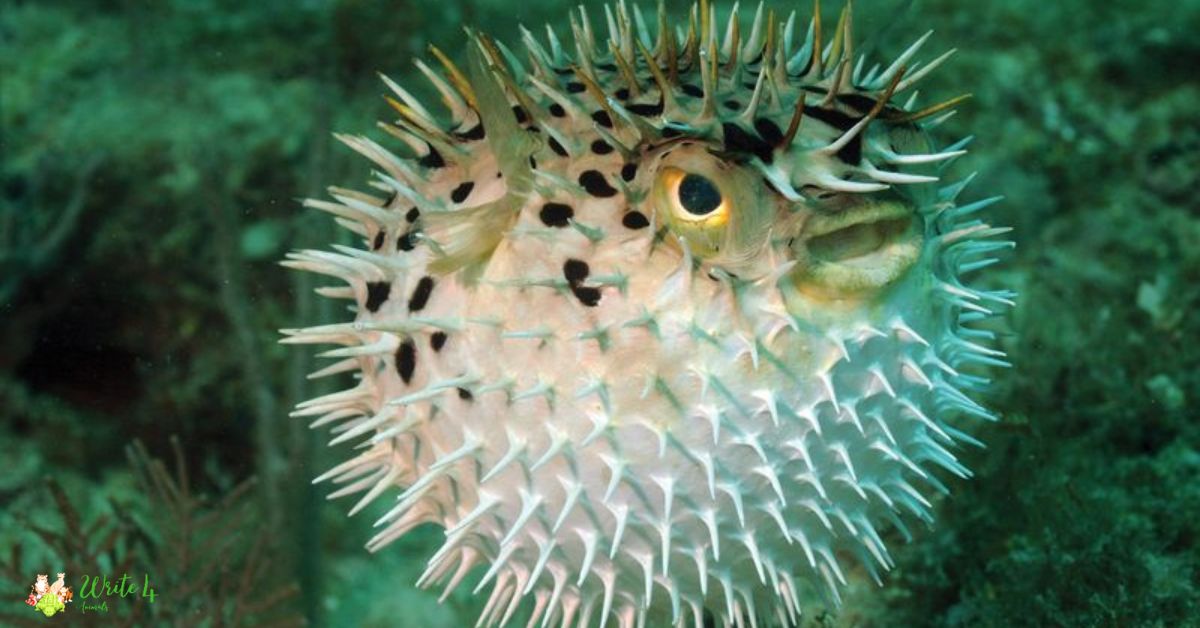
However, behind their cute appearance lies a potent defense mechanism – they contain a potent neurotoxin called tetrodotoxin, which can be lethal to predators and even humans if consumed.
Despite the risks, pufferfish are considered a delicacy in certain cuisines, especially in Japan, where specially trained chefs prepare them in a controlled manner to avoid poisoning. It is crucial to admire these intriguing fish from a safe distance to ensure their survival in the wild.
5. Toadfish (Batrachoididae family)
Toadfish are a family of fish known for their unique facial features, which include a broad and flattened head with a large forehead. They inhabit coastal and estuarine waters, often burying themselves in sandy or muddy bottoms to wait for prey. Toadfish are nocturnal and possess a specialized swim bladder that allows them to produce sounds, which they use for communication and courtship.
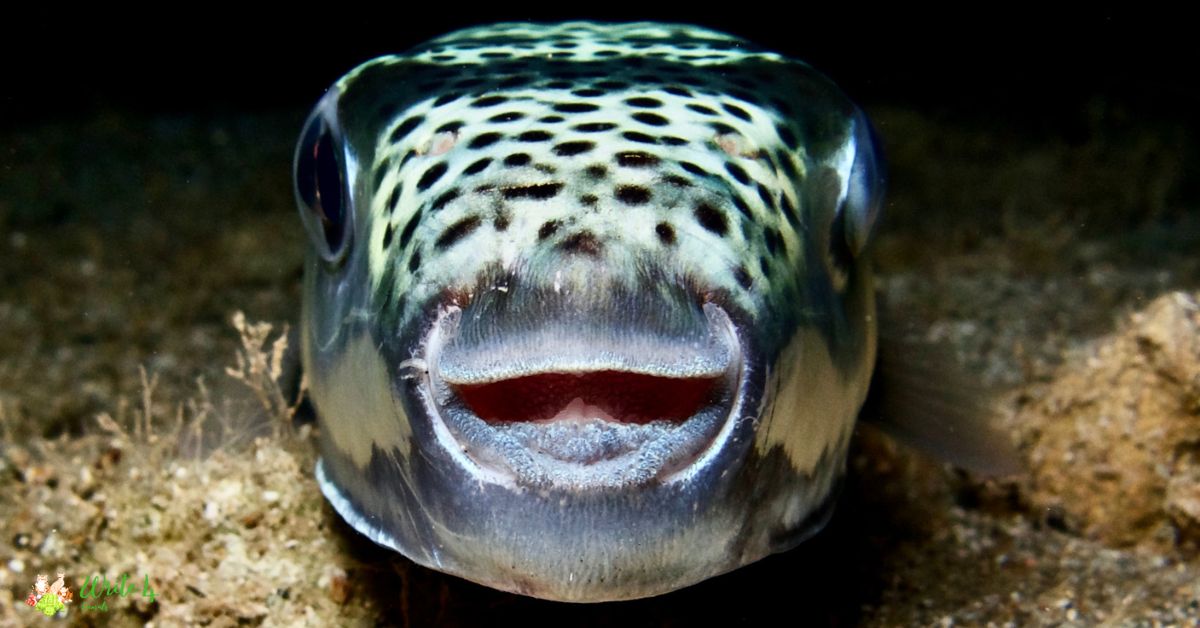
Some species of toadfish are also known for their ability to generate a loud, foghorn-like sound to attract mates during the breeding season. While toadfish may not be as visually striking as some other fish species, their interesting behaviors and vocal talents make them intriguing subjects for marine biologists studying animal communication.
6. Humphead Glassfish (Parambassis pulcinella)
The humphead glassfish is a small, freshwater fish native to Southeast Asia. As its name suggests, it has a prominent humped forehead, giving it a distinctive appearance. This species is typically found in slow-moving streams and rivers, where it feeds on small aquatic insects and crustaceans.
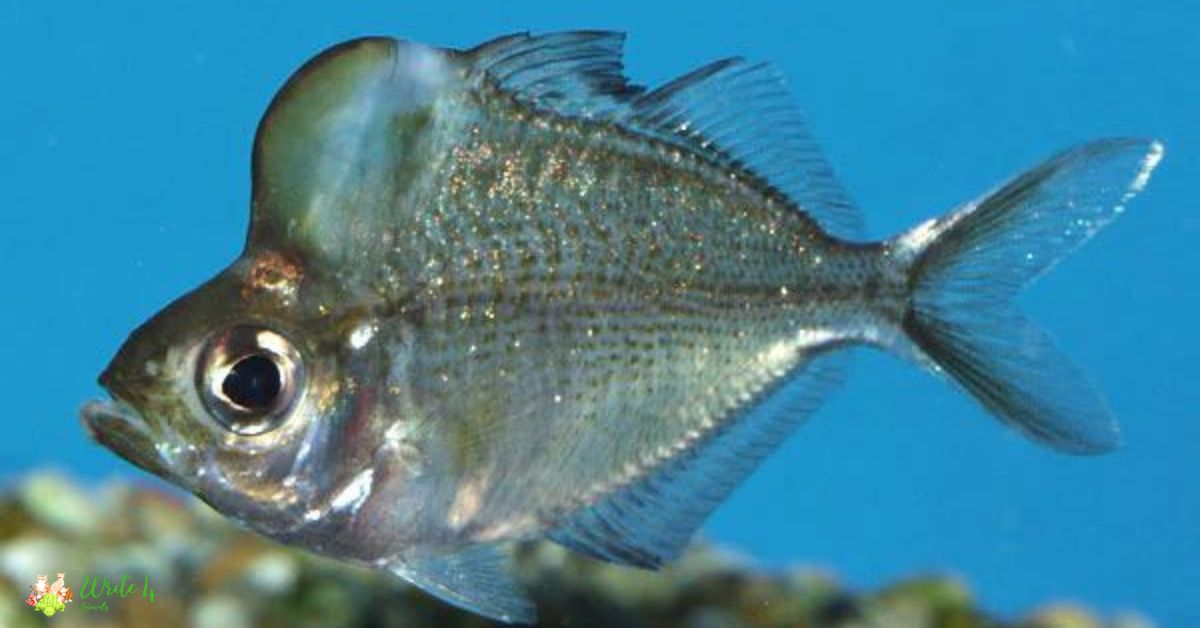
One of the most fascinating aspects of the humphead glassfish is its translucent body, which allows researchers to observe its internal organs and even see its heartbeat. This unique trait makes the humphead glassfish a popular choice for scientific studies on vertebrate physiology and development.
7. Pot-bellied Seahorse (Hippocampus abdominalis)
Seahorses are known for their peculiar body shape, and the pot-bellied seahorse is no exception. This species has a rounded forehead and a distinctive pot-belly, making it stand out among other seahorse species. Pot-bellied seahorses are found along the coasts of Australia and New Zealand, where they use their prehensile tails to anchor themselves to underwater structures, such as seagrass and coral reefs.

They are slow swimmers and rely on their excellent camouflage abilities to blend in with their surroundings and avoid predators. Like other seahorses, the male pot-bellied seahorse carries the developing eggs in a specialized pouch until they hatch, making them one of the few animal species where males carry and give birth to their offspring.
8. Chinese High-Fin Banded Shark (Myxocyprinus asiaticus)
The Chinese High-Fin Banded Shark, also known as the Chinese high-fin loach, is a freshwater fish native to China. It is characterized by its elongated body, large eyes, and, of course, its distinctively high forehead. This species prefers slow-moving rivers and streams with sandy or muddy bottoms.
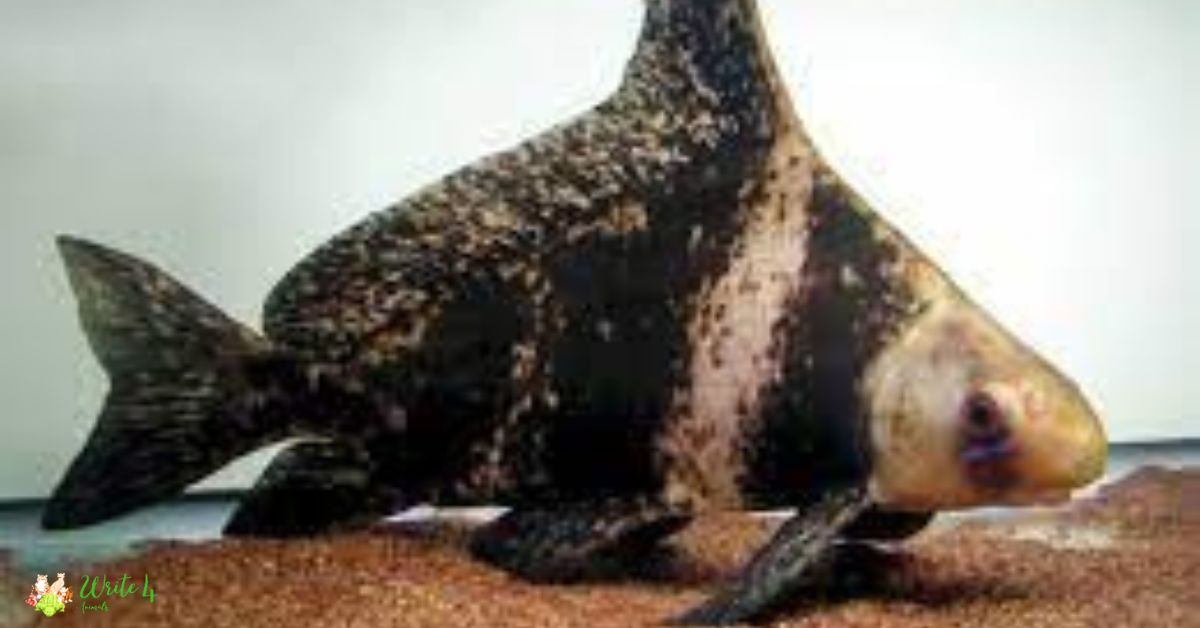
The Chinese High-Fin Banded Shark is a peaceful and social fish that thrives in groups. Due to its unique appearance and peaceful nature, it has become popular in the aquarium trade. However, it is essential to ensure proper care and suitable conditions to support the well-being of these fascinating fish in captivity.
9. Largescale Stoneroller (Campostoma oligolepis)
The Largescale Stoneroller is a species of freshwater fish native to North America. It is known for its prominent, upturned mouth and large, rounded forehead. As its name suggests, this fish feeds by using its specialized mouth to scrape algae and other organic matter off rocks in streams and rivers.
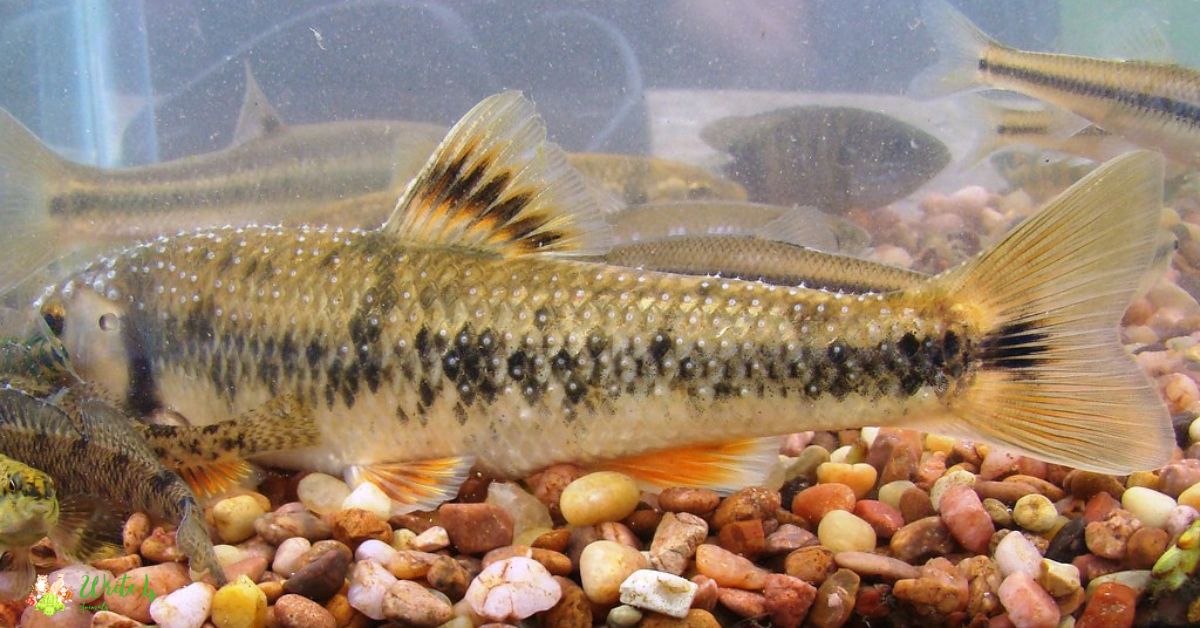
This behavior not only helps maintain the stream’s ecosystem but also gives the Largescale Stoneroller its unique appearance. Additionally, this fish has an interesting reproductive strategy – it lays its eggs in gravel beds, where the male guards and cares for them until they hatch.
The Largescale Stoneroller is an excellent example of how different fish species have adapted to specific habitats and ecological niches.
10. Pinecone Fish (Monocentris spp)
Pinecone fish, also known as pineapple fish or knightfish, are a group of marine fish found in tropical and subtropical waters. These fish have an unusual appearance, with a large, bulging forehead and a row of spiny scales that give them their common names. The spiny scales resemble the texture of a pinecone, hence the name “pinecone fish.”
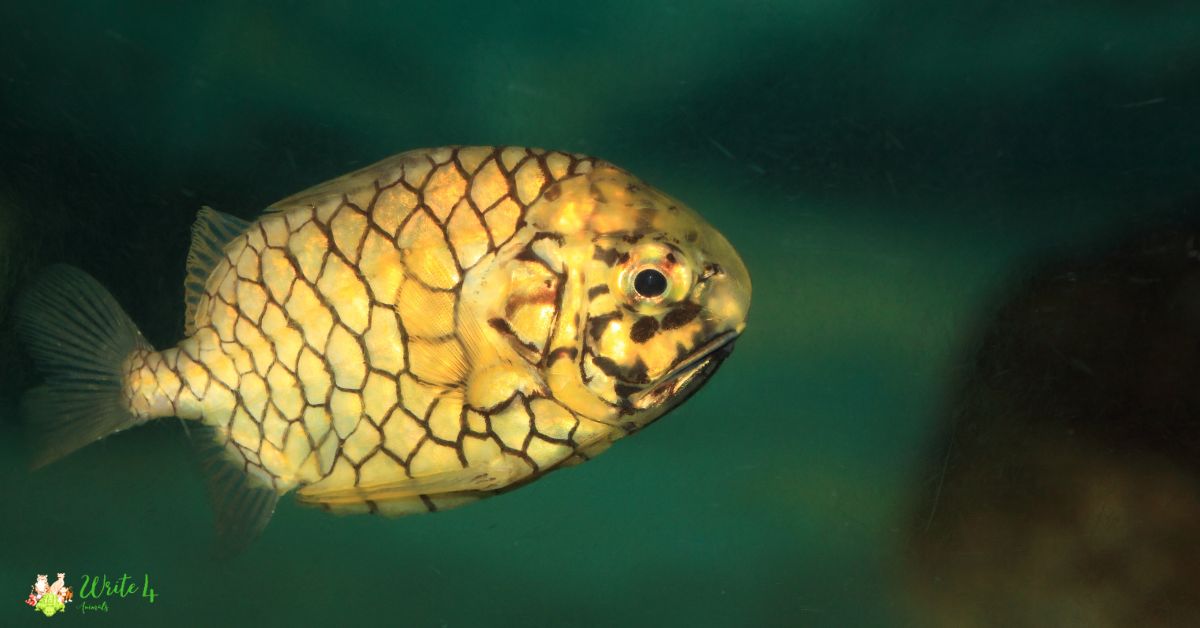
Pinecone fish are nocturnal and spend their days hiding in crevices and caves, only emerging at night to feed on plankton and small crustaceans. One of the most intriguing features of the pinecone fish is its ability to produce bioluminescent light using specialized light organs located on their lower jaw. This light production likely serves as a communication tool and helps them attract prey in the darkness of the deep sea.
Features of Fish with Big Forehead
Prominent Forehead: Fish with a big forehead exhibit a distinctive feature with an enlarged and noticeable forehead, setting them apart from other fish species.
Enhanced Sensory Perception: The enlarged forehead often houses specialized sensory organs, such as an expanded olfactory system or electroreceptors, allowing these fish to excel in detecting prey, predators, or mates.
Unique Adaptations: The large forehead may be an evolutionary adaptation, providing advantages in specific environments. It could aid in maneuvering through complex habitats or enhance the fish’s ability to locate food sources.
Species Diversity: Various fish species display this characteristic, each with its unique forehead size and shape, reflecting the diversity of evolutionary pathways and ecological niches they inhabit.
Communication Signaling: The big forehead might play a role in intraspecific communication, serving as a visual signal for species recognition, social hierarchy, or mating displays.
Environmental Indicator: Changes in the size or shape of the forehead could be indicative of environmental factors, serving as a potential indicator of ecosystem health or changes in the fish’s habitat.
Research Importance: Scientists study fish with big foreheads to unravel the mysteries of their evolutionary development, ecological roles, and potential applications in biomimicry or environmental monitoring.
Frequently Asked Questions
What causes some fish to have a big forehead?
Fish with big foreheads often have unique adaptations driven by evolutionary pressures. These adaptations may include enhanced sensory perception, specialized hunting strategies, or communication purposes within their ecosystems.
Are fish with big foreheads found in specific regions?
These fish can be found in various aquatic environments worldwide, spanning freshwater and marine ecosystems. Different species may inhabit different regions, adapting to the specific conditions of their habitats.
Do all species of fish with big foreheads share similar characteristics?
No, there is considerable diversity among fish with big foreheads. Each species may have distinct features, sizes, and shapes of foreheads, reflecting their evolutionary history and ecological niche.
What is the role of the big forehead in the behavior of these fish?
The big forehead often plays a crucial role in the behavior of these fish. It may contribute to improved sensory perception, aid in communication, or serve as a specialized adaptation for navigating specific environments.
Can the size of a fish’s forehead change over time?
While individual fish may exhibit some variability in the size of their foreheads, significant changes are usually associated with evolutionary processes over longer periods. Environmental factors and selective pressures can influence these changes.
Are fish with big foreheads endangered or threatened?
The conservation status of fish with big foreheads varies among species. Some may face threats due to habitat loss, pollution, or overfishing, while others may thrive in their specific ecosystems.
Are there any economic or ecological benefits associated with these fish?
Research on fish with big foreheads can provide insights into ecological dynamics, potentially leading to applications in environmental monitoring and management. Additionally, understanding their unique adaptations may inspire innovations in biomimicry.
Can fish with big foreheads be kept in aquariums?
Depending on the species and their specific requirements, some fish with big foreheads may be suitable for aquariums. However, it is crucial to consider their natural habitat, diet, and behavior to provide appropriate care.
Recommended
1. 12 Ugliest dog breeds in the world
2. Top 12 Most Cutest Rodents in the World
